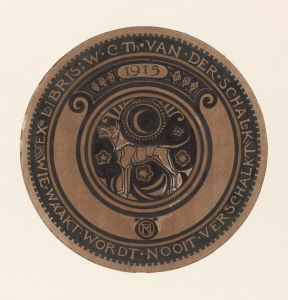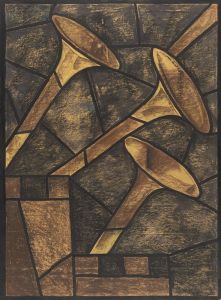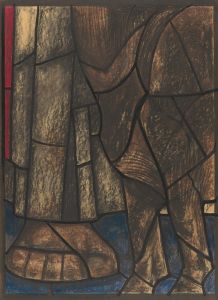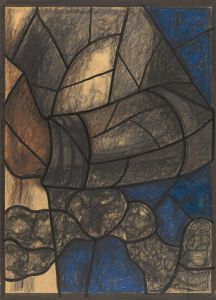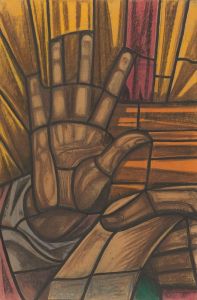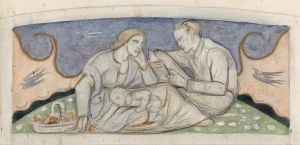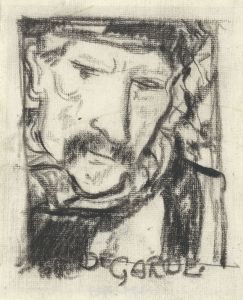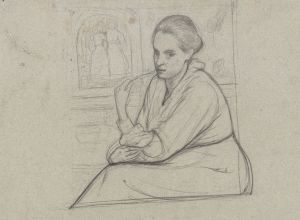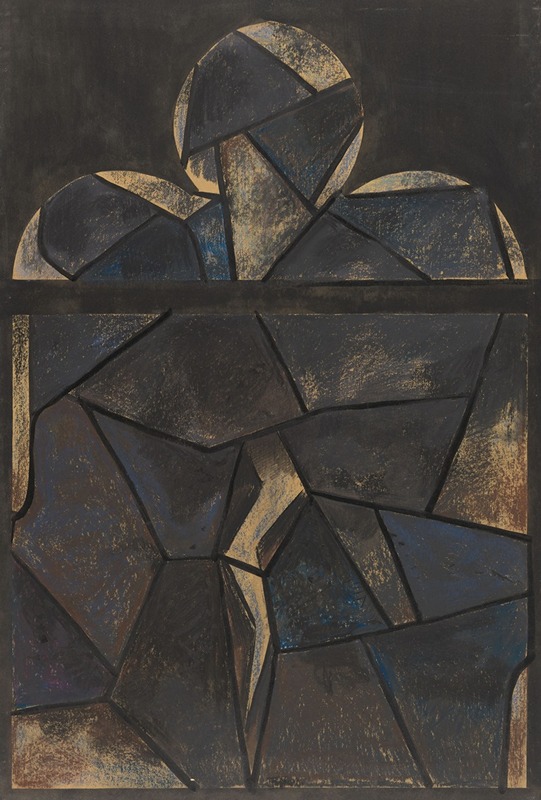
Ontwerp voor raam in het Noordertransept in de Dom te Utrecht 62
A hand-painted replica of Richard Nicolaüs Roland Holst’s masterpiece Ontwerp voor raam in het Noordertransept in de Dom te Utrecht 62, meticulously crafted by professional artists to capture the true essence of the original. Each piece is created with museum-quality canvas and rare mineral pigments, carefully painted by experienced artists with delicate brushstrokes and rich, layered colors to perfectly recreate the texture of the original artwork. Unlike machine-printed reproductions, this hand-painted version brings the painting to life, infused with the artist’s emotions and skill in every stroke. Whether for personal collection or home decoration, it instantly elevates the artistic atmosphere of any space.
Richard Nicolaüs Roland Holst was a prominent Dutch artist known for his contributions to the arts and crafts movement in the Netherlands. He was born on December 4, 1868, in Amsterdam and became a significant figure in Dutch art during the late 19th and early 20th centuries. Holst's work encompassed various forms, including painting, illustration, and design, and he was particularly noted for his stained glass window designs.
One of his notable works is the "Ontwerp voor raam in het Noordertransept in de Dom te Utrecht 62," which translates to "Design for a Window in the North Transept of the Dom in Utrecht 62." This piece is part of his extensive work in stained glass, a medium that Holst excelled in due to his ability to blend artistic vision with architectural functionality.
The Dom Church, or St. Martin's Cathedral, in Utrecht is one of the most important churches in the Netherlands, with a rich history dating back to its initial construction in the 13th century. The church has undergone numerous changes and restorations over the centuries, and stained glass windows have been a significant aspect of its interior decoration. Holst's design for the north transept window is a testament to his skill in creating works that are both aesthetically pleasing and harmonious with the architectural setting.
Holst's approach to stained glass was influenced by the arts and crafts movement, which emphasized traditional craftsmanship and the use of simple forms and materials. His designs often featured intricate patterns and vibrant colors, which were intended to enhance the spiritual and aesthetic experience of the churchgoers. The "Ontwerp voor raam in het Noordertransept in de Dom te Utrecht 62" likely reflects these principles, showcasing Holst's ability to integrate art with architecture.
In addition to his work in stained glass, Richard Roland Holst was also a respected teacher and writer. He served as a professor at the Rijksakademie van Beeldende Kunsten in Amsterdam, where he influenced a generation of artists with his teachings on art and design. His writings further contributed to the discourse on art in the Netherlands, cementing his legacy as a key figure in Dutch cultural history.
Holst's contributions to the Dom in Utrecht are part of a broader body of work that includes numerous public and private commissions. His stained glass windows can be found in various churches and buildings across the Netherlands, each reflecting his unique style and artistic philosophy. Despite the challenges of working with stained glass, such as the technical demands of the medium and the need to collaborate with architects and craftsmen, Holst's work remains highly regarded for its beauty and craftsmanship.
Overall, Richard Nicolaüs Roland Holst's "Ontwerp voor raam in het Noordertransept in de Dom te Utrecht 62" is a significant example of his work in stained glass, illustrating his ability to create art that is both visually striking and deeply integrated with its architectural context. His legacy as an artist and educator continues to be celebrated in the Netherlands and beyond.





